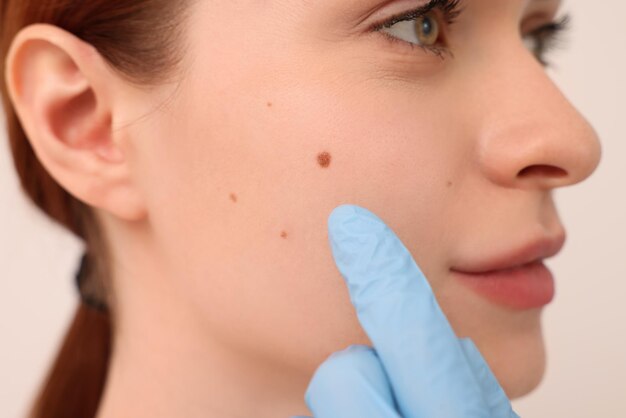Introduction
Moles on the face—some love them, some can’t stand them. Maybe yours is a cute beauty mark, or it’s smack in the middle of your forehead, drawing too much attention. Either way, you’re not alone.
Moles come in all shapes, sizes, and shades. Most are harmless, but some can be annoying, uncomfortable, or even a health concern. The good news? You have plenty of safe and effective options if you want one removed. For those in Islamabad, Best Laser Ablation for Warts, Moles, Milia, and Skin Tags Treatment in Islamabad offers a reliable and safe solution for mole removal.
From laser treatments to minor surgical procedures, dermatologists can help you get clear skin with minimal hassle. Let’s dive into what you need to know.
Understanding Facial Moles
What Are Moles?
Moles are just clusters of pigmented skin cells. They pop up naturally and can be brown or black or even match your skin tone. Some are smooth and flat, while others are raised and a little bumpy.
You might have had yours since birth, or it showed up later thanks to genetics, sun exposure, or hormonal changes. Most moles stay the same for years, but it’s best to check if one suddenly grows, changes shape, or darkens. If you’re considering removal, How Laser Ablation Helps Remove Skin Imperfections in Islamabad provides an effective method for safely treating moles and other skin imperfections.
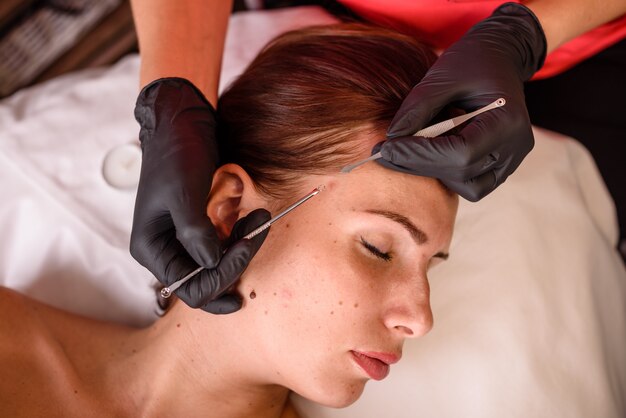
Why Do Moles Appear on the Face?
Moles don’t just show up randomly. There’s always a reason behind them:
- Genetics – If your family has many moles, you’ll probably have them too.
- Sun exposure – UV rays can trigger new moles and make existing ones darker.
- Hormonal changes – Puberty, pregnancy, and ageing can all play a role.
Types of Facial Moles
Not all moles are created equal. Some are tiny and barely noticeable, while others seem to demand attention. Here are the most common types:
- Common moles – Small, round, and even in colour. No big deal.
- Atypical moles – Larger, oddly shaped, and sometimes different colours. A dermatologist should check these.
- Congenital moles – Present at birth, can be large or small.
- Raised moles – Bumpy, sometimes with hair (yes, moles can have hair—it’s normal).
- Cancerous moles – If a mole suddenly changes in size, shape, or colour, don’t ignore it. Get it checked.
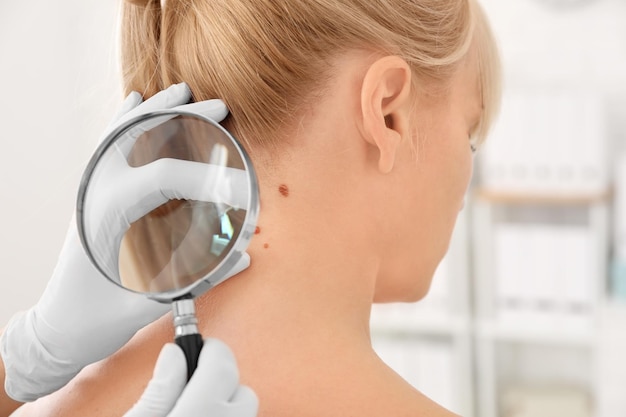
Safe and Effective Mole Removal Methods
Mole removal isn’t a one-size-fits-all deal. The right method depends on the size, depth, and type of mole. Some treatments are quick and painless, while others require minor procedures. If you’re interested in how laser treatment works for skin imperfections, The Science Behind Laser Treatment for Warts and Skin Tags provides a clear explanation.
A. Non-Surgical Treatments for Mole Removal
For small, surface-level moles, non-surgical options are great. They’re quick, involve minimal discomfort, and don’t require stitches.
1. Laser Ablation
A dermatologist uses a focused laser to break down the mole’s pigment. Over time, it fades away. The procedure is fast, doesn’t require cutting, and leaves little to no scarring.
Best for: Small, flat, non-cancerous moles.
2. Cryotherapy (Freezing the Mole)
Liquid nitrogen is applied to freeze the mole. It eventually shrinks and falls off. It sounds intense, but it’s pretty straightforward. You might feel a little sting, but it’s over quickly.
Best for: Surface-level moles.
3. Electrocautery (Burning the Mole Off)
This method uses a tiny electrical current to burn off the mole. It’s precise and prevents bleeding, but there’s a zap sensation.
Best for: Raised moles or those with a fleshy texture.
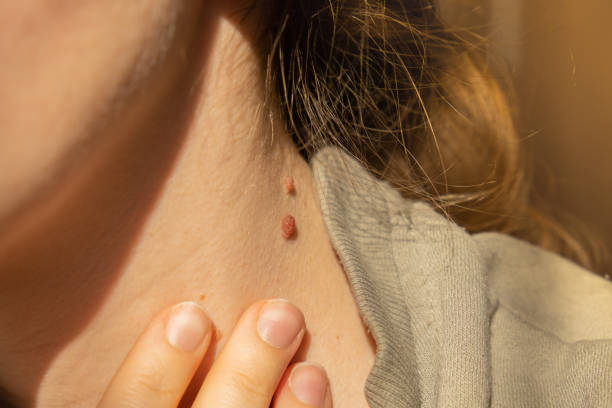
4. Topical Treatments & Home Remedies
You’ve probably seen online hacks using apple cider vinegar or garlic to “burn off” moles. Could you not do it? These can cause irritation, burns, or even scarring. Over-the-counter creams aren’t much better—they rarely work on deep moles.
Best for: Not recommended for serious mole removal.
B. Surgical Treatments for Mole Removal
For larger or deeper moles, surgery is often the best bet. These methods remove the entire mole, reducing the risk of regrowth.
1. Excision with Stitches
The mole is cut out, and the wound is stitched up. It’s a surefire way to remove it permanently. The downside? You’ll have a small scar, but it fades over time.
Best for: Large or potentially cancerous moles.
2. Shave Excision
A scalpel is used to shave off the mole without cutting too deep. The area heals on its own, and there’s usually little scarring.
Best for: Small, raised moles.
3. Punch Biopsy
A tiny circular blade removes the mole along with a bit of skin. It’s quick and effective.
Best for: Slightly deeper moles.
4. Mohs Surgery
If there’s a risk of skin cancer, Mohs surgery is the go-to. It removes the mole layer by layer while preserving as much healthy skin as possible.
Best for: Cancerous or high-risk moles.
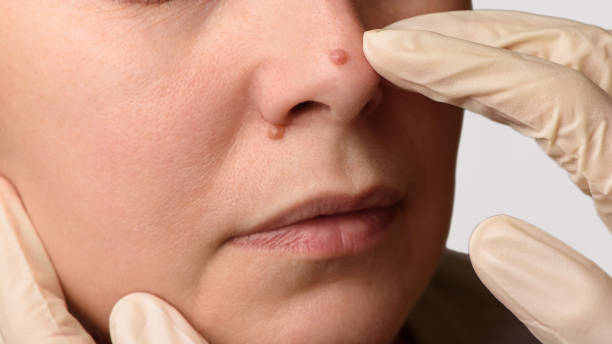
Best Treatment Option: Laser Ablation for Mole Removal
Laser ablation is a top choice when it comes to quick, scar-free mole removal. It’s painless, doesn’t require stitches, and heals fast.
Dr. Taskeen Iqbal specializes in laser mole removal in Islamabad, offering advanced, high-precision treatments.
Why people love laser removal:
- No cutting, stitches, or downtime
- Quick healing with minimal aftercare
- No visible scars
Laser treatment is worth considering if you want a safe, effective, and hassle-free solution.
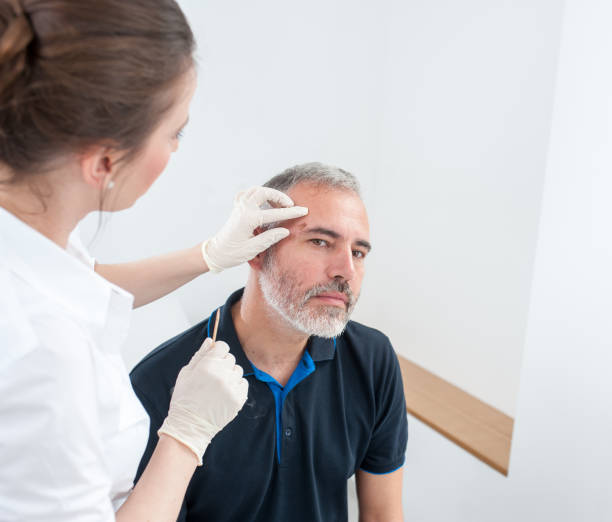
Post-Treatment Care & Recovery Tips
After mole removal, caring for your skin helps it heal faster and prevents complications.
- Keep it clean – Wash with mild soap and avoid scrubbing.
- Apply any prescribed ointments. It helps with healing and prevents infection.
- Hands off! – Don’t pick at scabs; let them fall off naturally.
- Avoid sun exposure – Use sunscreen to protect healing skin.
- Stay hydrated and eat well – Good nutrition = faster recovery.
Healing usually takes one to two weeks.
Potential Risks and Side Effects
Mole removal is generally safe, but minor side effects can happen:
- Temporary redness or swelling
- Mild scabbing
- Slight discoloration
Serious side effects like infection or unusual scarring are rare but should be checked by a doctor.
Choosing the Right Dermatologist in Islamabad
A skilled dermatologist ensures safe, professional mole removal with the best possible results.
Dr. Taskeen Iqbal is an expert in laser mole removal in Islamabad, providing top-notch care and personalized treatments.
Why patients trust Dr. Taskeen Iqbal:
- Specializes in advanced mole removal techniques
- Minimal discomfort and excellent results
- High patient satisfaction
A consultation can help you find the best approach for your skin type.
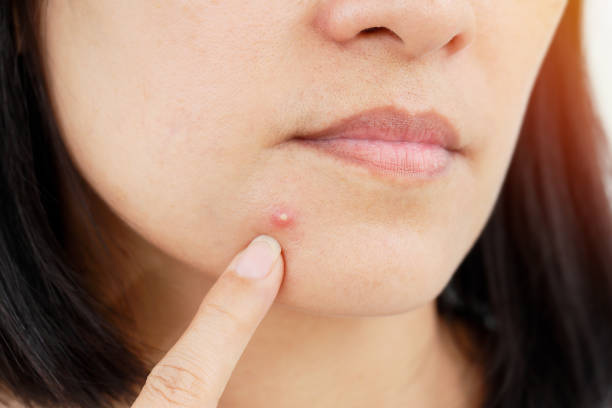
Conclusion
Mole removal is easier than ever. Whether for cosmetic reasons or health concerns, you have options. Non-surgical treatments like laser ablation are great for smaller moles, while surgical techniques work best for deeper ones.
Dr. Taskeen Iqbal offers safe, effective mole removal with the latest technology for expert care in Islamabad.
Thinking about getting a mole removed? Book a consultation today for expert advice and professional care.
FAQs
What is the best mole removal technique for the face?
The best technique depends on the mole type. Laser ablation is a top choice for small, non-cancerous moles as it’s painless and leaves little to no scarring. Surgical Excision is better for deeper or larger moles.
Dr. Taskeen Iqbal offers advanced laser treatments in Islamabad for safe and effective mole removal.
What is the treatment for moles on the face?
Mole treatments include laser removal, cryotherapy (freezing), electrocautery (burning), and surgical Excision. A dermatologist will recommend the best option based on size and depth.
Dr. Taskeen Iqbal specializes in modern mole removal techniques to ensure the best cosmetic results.
How do you naturally remove moles from the face?
There are no proven home remedies for safe mole removal. DIY treatments like apple cider vinegar can cause skin irritation or scarring. Professional treatment is the safest way to remove a mole.
Dr. Taskeen Iqbal provides expert mole removal with minimal discomfort and no risk of skin damage.
How to stop moles from growing on the face?
You can reduce new mole formation by wearing sunscreen daily, avoiding excessive sun exposure, and maintaining a healthy skincare routine. Genetics also play a role, so not all moles can be prevented.
Dr Taskeen Iqbal provides expert skincare advice to help prevent and manage facial moles.
How do you control moles naturally?
You can’t completely stop moles from forming, but protecting your skin from UV rays, eating a healthy diet, and monitoring changes in existing moles can help maintain skin health. Dr. Taskeen Iqbal offers professional mole assessment and personalized treatment plans in Islamabad.

